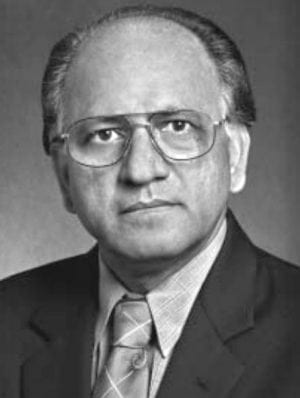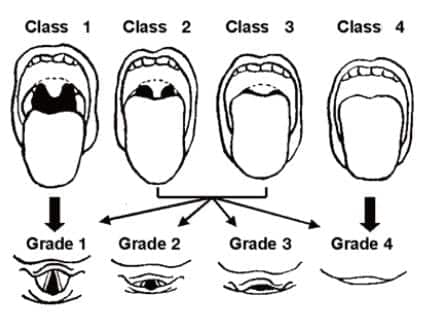Seshagiri Rao Mallampati

Seshagiri Rao Mallampati (1941 – ) Indian born American anesthesiologist.
Eponymously affiliated with the Mallampati Score used to predict the ease of endotracheal intubation. Mallampati encountered a patient whose trachea was difficult to intubate despite optimal positioning, equipment and with an anatomically normal head and neck. Further evaluation revealed the uvula and faucial pillars and were concealed by the base of the tongue.
Mallampati then made it his practice to see wether the faucial pillars and uvula were visible in every patient. He found that the clinical sign of the concealment of the uvula and faucial pillars by the base of the tongue was helpful in predicting the majority of difficult tracheal intubations. He later hypothesized and verified that this in a study published in 1985, dividing the patients into 3 classes, with Dr. Samsoon and Dr. Young’s addition of the 4th class in the Mallampati scoring system.
Biography
- Born in Patchalatadi Parru, Andhra Pradesh, India in 1941
- 1963 – Commenced Medical studies at Guntur Medical College
- 1965 – Transferred to Andhra Medical College
- 1968 – Graduated with an MBBS from Andhra Medical College, commencing internship at King George Hospital in Visakhapatnam
- 1971 – Emigrated to USA
- 1975 – Completed residency in anaesthesiology at Lahey Clinic Foundation and Boston Hospital for Women – followed by a clinical fellowship at Harvard Medical School in Boston, Massachusetts, USA
- 1976 – Diplomate of American Board of Anaesthesiology
- 1977 – Fellow of the American Board of Anaesthesiology
- 1975-1980 Attending anaesthesiologist at Boston Hospital for Women
- 1980-1985 Attending anaesthesiologist at Brigham and Women’s Hospital, Boston
- 1983 – Published a letter to the editor in the Canadian Anaesthetists Society Journal
- 1985 – Assistant Professor of anaesthesiology at Harvard Medical School and published the Mallampati scoring system to the Canadian Anaesthetists Society Journal
- 1987 – Dr. Samsoon and Dr. Young publish an article to Journal of Anaesthesia, UK adding a 4th class to the Mallampati Score
- 2017 – Retired from medical practice
Medical Eponyms
Mallampati Score (1985)
The Mallampati Score is a grading system based on the visualisation of the pharyngeal structures during laryngoscopy. A study of 210 patients confirmed the degree of difficulty in seeing three pharyngeal structures (uvula, soft palate and faucial pillars) as an accurate predictor of difficulty when using direct laryngoscopy.
If the base of the tongue is disproportionately large relative to the capacity of the oropharynx, it would obscure the view of the faucial pillars, posterior part of the uvula and eventually the soft palate in that order. It would also render the angle to the trachea more acute and obscure the larynx – this anatomical relation was hypothesised by Mallampati and verified with his study published in 1985

Major Publications
- Mallampati SR. Clinical sign to predict difficult tracheal intubation (hypothesis). Can Anaesth Soc J. 1983 May;30(3 Pt 1):316-7.
- Mallampati SR, Gatt SP, Gugino LD, Desai SP, Waraksa B, Freiberger D, Liu PL. A clinical sign to predict difficult tracheal intubation: a prospective study. Can Anaesth Soc J. 1985 Jul;32(4):429-34.
References
Biography
- Maltby R. Seshagiri Rao Mallampati. In: Notable Names in Anaesthesia. The Choir Press, 2013: 126-128
- Giuca MS, Desai SP. Eponyms in the operating room: careers of five American physicians. Bull Anesth Hist. 2013 Oct;31(2):32-5, 39.
- Bibliography. Mallampati, S. Rao. WorldCat Identities
Eponymous terms
- Samsoon GL, Young JR. Difficult tracheal intubation: a retrospective study. Anaesthesia. 1987 May;42(5):487-90.
- O’Leary AM, Sandison MR, Roberts KW. History of anesthesia; Mallampati revisited: 20 years on. Can J Anaesth. 2008 Apr;55(4):250-1.
- Bateman BT, Alston TA. Commonly used eponyms in anesthesia. J Clin Anesth. 2009 Feb;21(1):67-71
[cite]
eponym
the person behind the name
Resident Medical Officer currently working in Emergency Department at Sir Charles Gairdner Hospital. Pianist and avid Golfer | LinkedIn |
Chris is an Emergency Medicine Specialist with an interest in diagnostic and procedural ultrasound. He works at Sir Charles Gairdner Hospital in Perth, Western Australia. In addition to working in a tertiary Emergency Department he has experience in retrieval medicine with Royal Flying Doctor Service Western Operations, acute patient transport co-ordination with WA Country Health Service and in education as director of MedVault Education in Association with the Australian Medical Association WA.

